Hoof Trimming Basics
Regular hoof trimming is an important part of maintaining a healthy, happy pig. It is important to desensitize your piglets by handing and filing their hooves often when they are young. This makes the hoof trimming a much easier task as your pig grows.
If you are not able to manage your pig for hoof trimming we recommend that your vet or an experienced hoof trimmer or farrier take care of this for your pig’s health and well-being.
Knowing the anatomy of the hoof is very important. Examine and learn what the hoof looks like from all angles. Notice what is hard tissue and what is soft. Watch the way your pig’s hooves grow and change. The more familiar you are with the anatomy, the more confident and comfortable you will be trimming and shaping them for your pig.
There are additional photos and videos at the bottom of the page to help you become familiar with the hoof trimming process, techniques, and the optimum length and shape of the hooves.
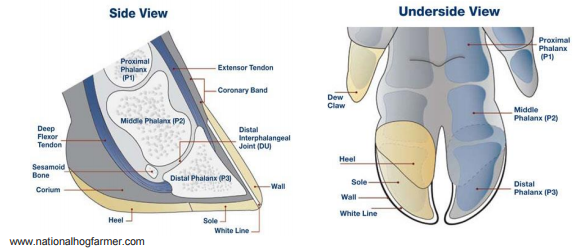
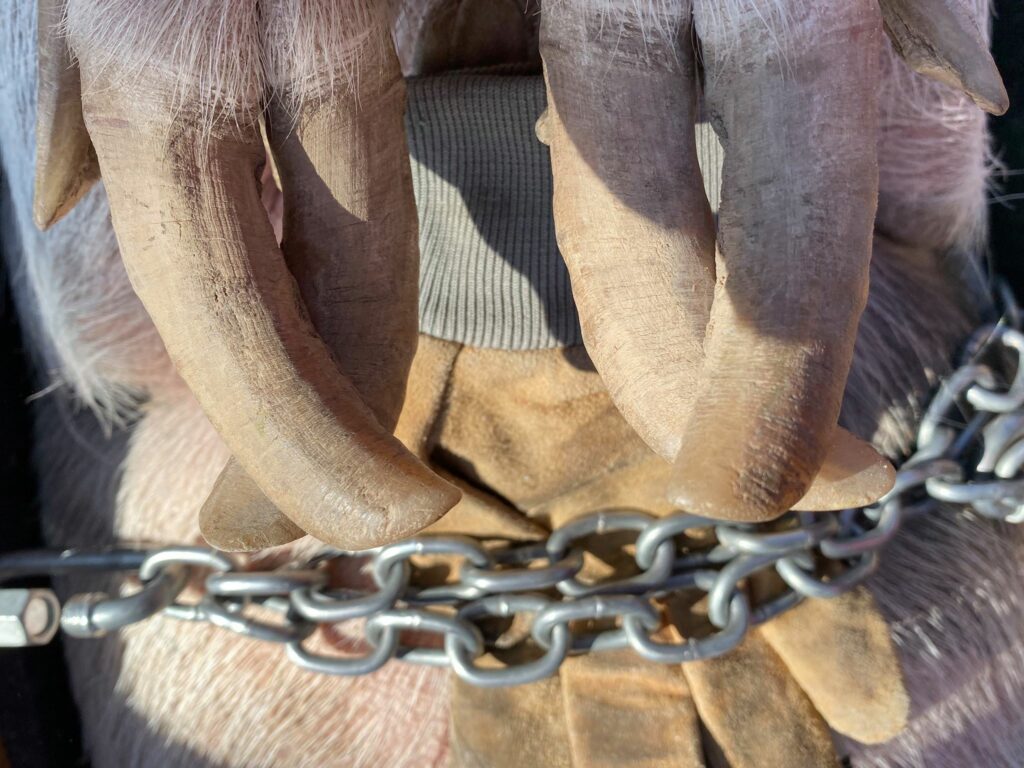

Hoofin’ It Mobile Small Livestock Hoof Care shows the difference between overgrown hooves and properly trimmed hooves. The photo on left is pre-trim, on right is after the trim.
Get Ready
There are a few tools you can use to trim and maintain the length and shape of your pig’s hooves. With a piglet a hard wire cutter, large nail cutter, and high grit emery board will all work to maintain the hooves. As your pig ages the hooves will become thicker and tougher and sturdier tools will be needed. Goat hoof trimmers, horse hoof nippers, dremel with the sand paper drums, metal file or rasp are all great tools for trimmings. Professional pig hoof trimmers may use the Hoof Boss, but a low cost dremel is plenty of power for most owners.





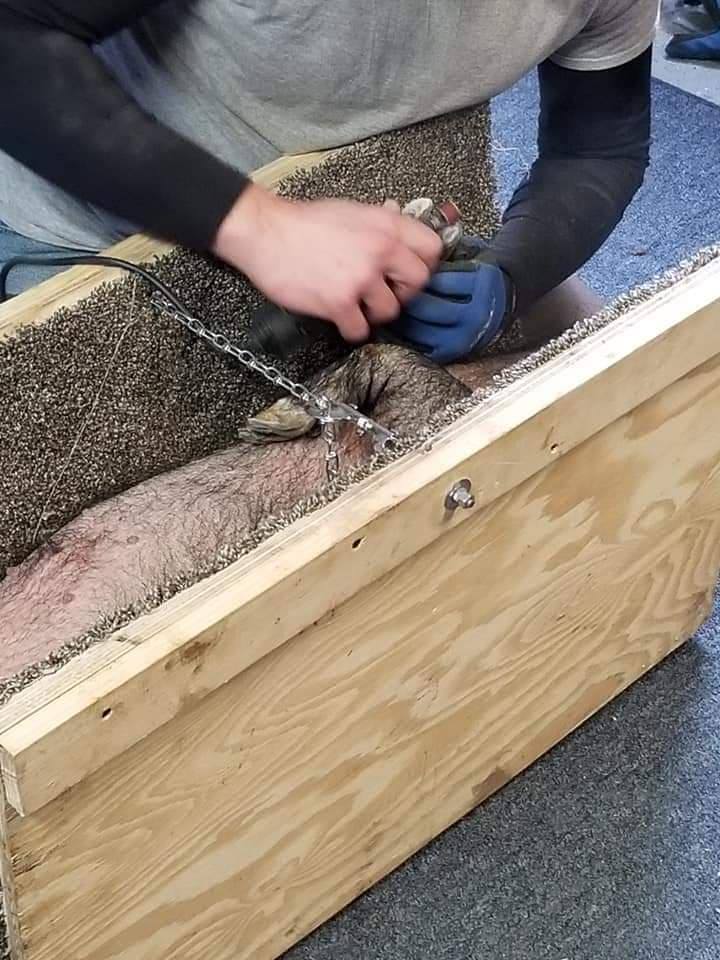
Freedom Acres Ranch in Michigan using a dremel to shape the hooves

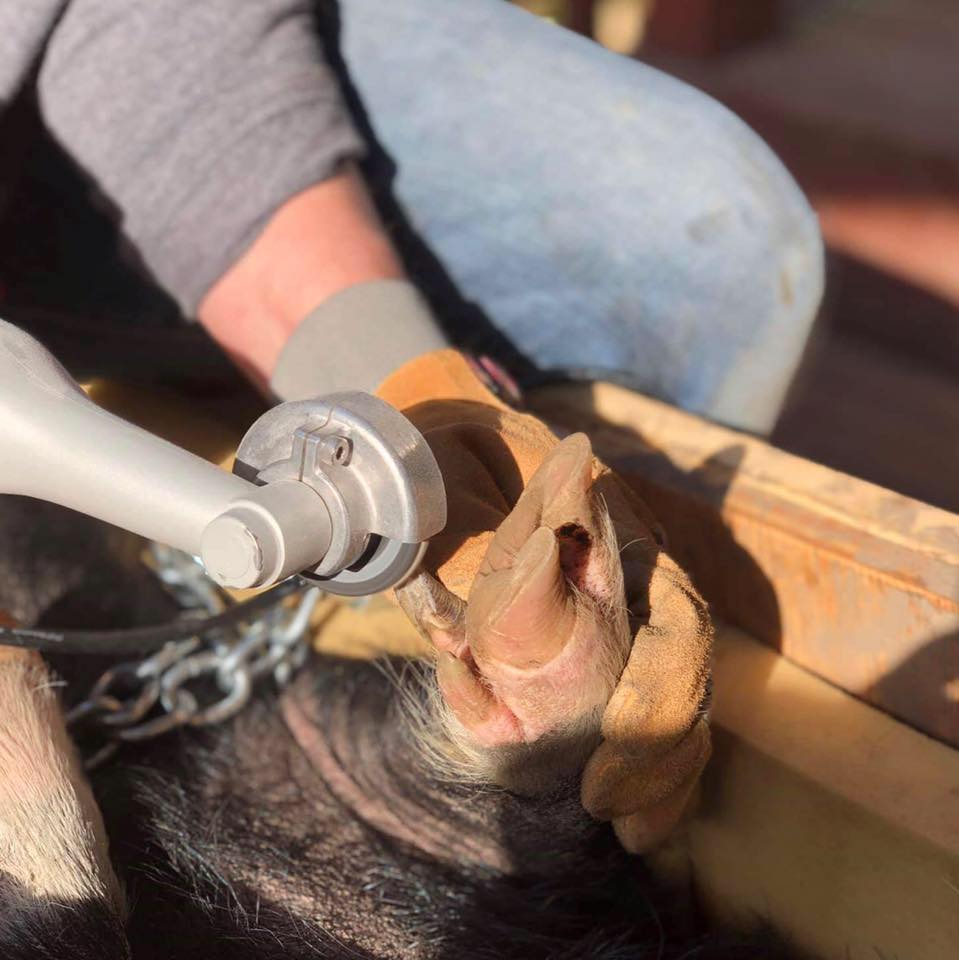
Hoofin’ It – Mobile Small Livestock Hoof Care using a Hoof Boss to trim hooves

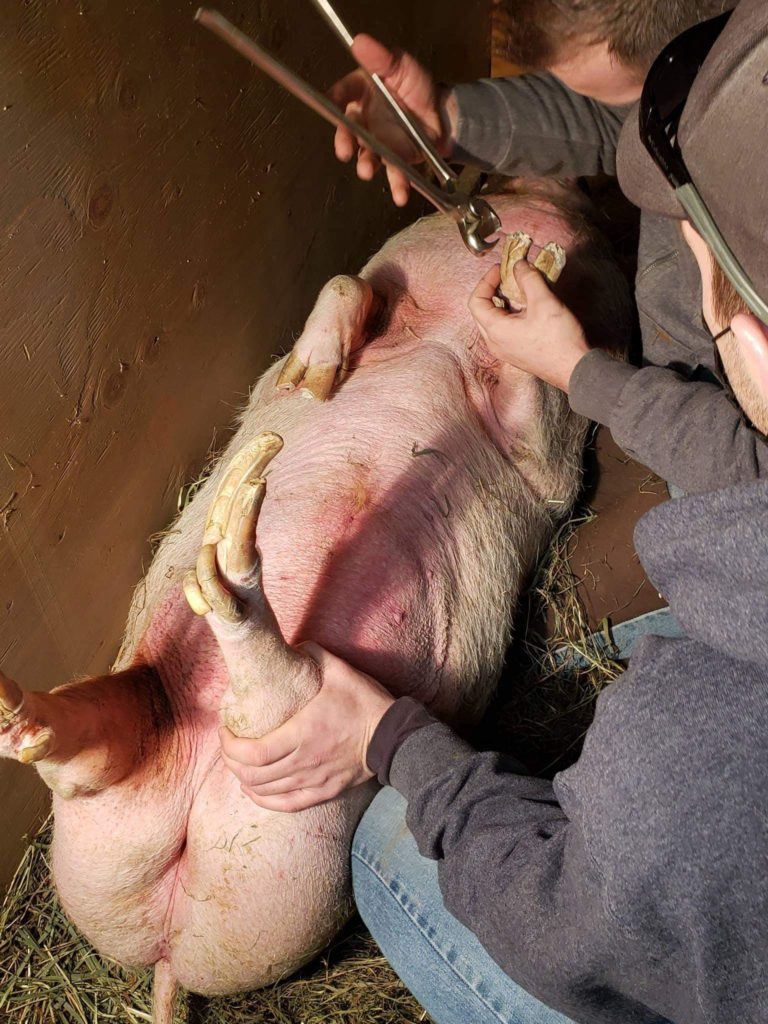
Freedom Acres Ranch in Michigan using a horse nippers to shorten long hooves
Keep a Schedule for Healthy Hooves
Regular hoof mantainance will keep your pig’s hooves healthy and comfortable. The frequency of hoof trims varies between pigs depending on their genetics, hoof structure, diet, and environment. In general every 6 months is a good hoof trimming schedule for most pigs. Some may need more frequent small trims while others may be able to go longer in between trims. Overgrown, cracked, or misaligned hooves will cause unecessary pressure and pain on your pig’s posture, joints, and ligaments. Hoofin’ It – Mobile Small Livestock Hoof Care shows the difference a hoof trim can make. Notice the longer the hooves are, the farther the leg is pushed back. As hooves grow out, they change the angle of the leg, causing unecessary on the joints, ligaments, and bones, and the potential for stress cracks in the hooves.

Time to Trim
Get your pig comfortable on his/her side with a belly rub and then check the hooves one by one. It is important to start them getting used to having their hooves touched and trimmed when young and often. Remove any impacted dirt from inside the front of the grown hoof. Once you can clearly see hard and soft tissue, you can begin cutting or grinding away the excess.
Cut excess hoof length. It can be helpful to use a flashlight to see where the sole of the hoof is. Do not trim too short or you will cause pain and bleeding. In case of bleeding, styptic powder or corn starch can be used to slow the blood. Go slow with small snips or filing in short bursts as you become familiar with the hooves.
Shape the hoof to balance as seen in the hoof trimming photos below. As pig hooves grow, they can develop curving and uneven hoof growth on the underside of the hoof. Grind excess hoof growth to smooth and balance the bottom of the hoof for correct standing posture and a level walking surface for the pig. The underside of the hooves should be smooth and flat. Continue to use caution to avoid cutting into the hoof sole.
Make sure the two toes facing each other are straight against each other without a curve or hook. Use a file, dremel, or rasp to smooth rough edges.
Pigs have two dew claws that may also need trimming while being aware of the soft tissue inside. Do not cut too short.
Calluses or hard growth on the pad can be smoothed out on the bottom of the hoof.
Finish the trimming with a hoof conditioner to nourish and potect the hooves such as Hooflex or Mane N Tail Hoofmaker.
Flip the Pig
If your pig will not allow hoof handling, you may choose to flip them to hold them securely while filing, clipping, or grinding and shaping with a dremel. Learn how to flip the pig here.
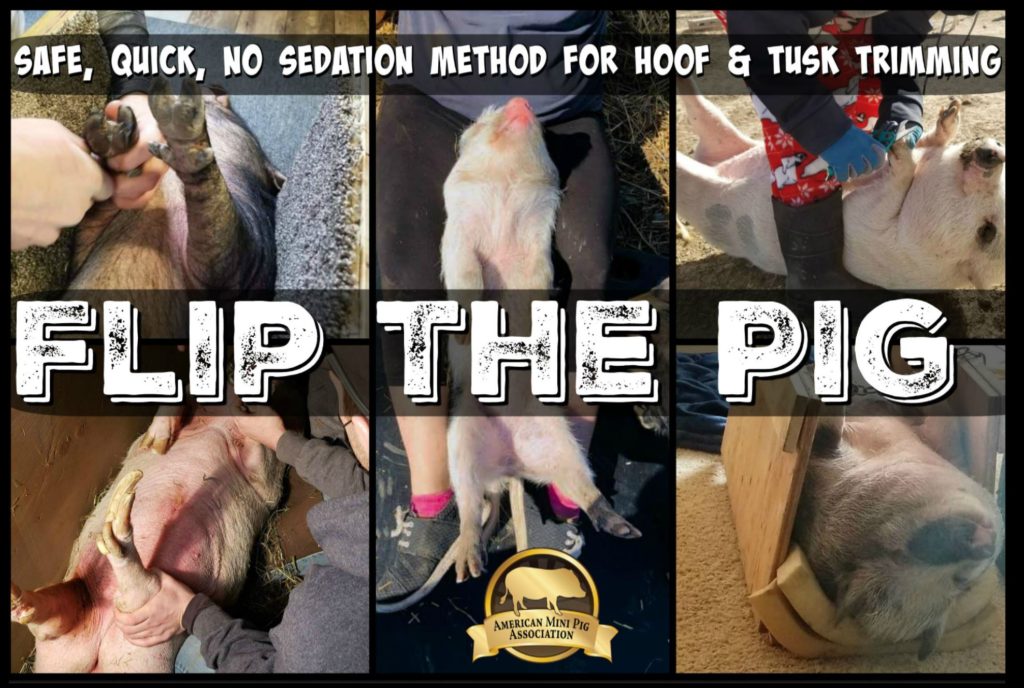
-

Freedom Acres Ranch -
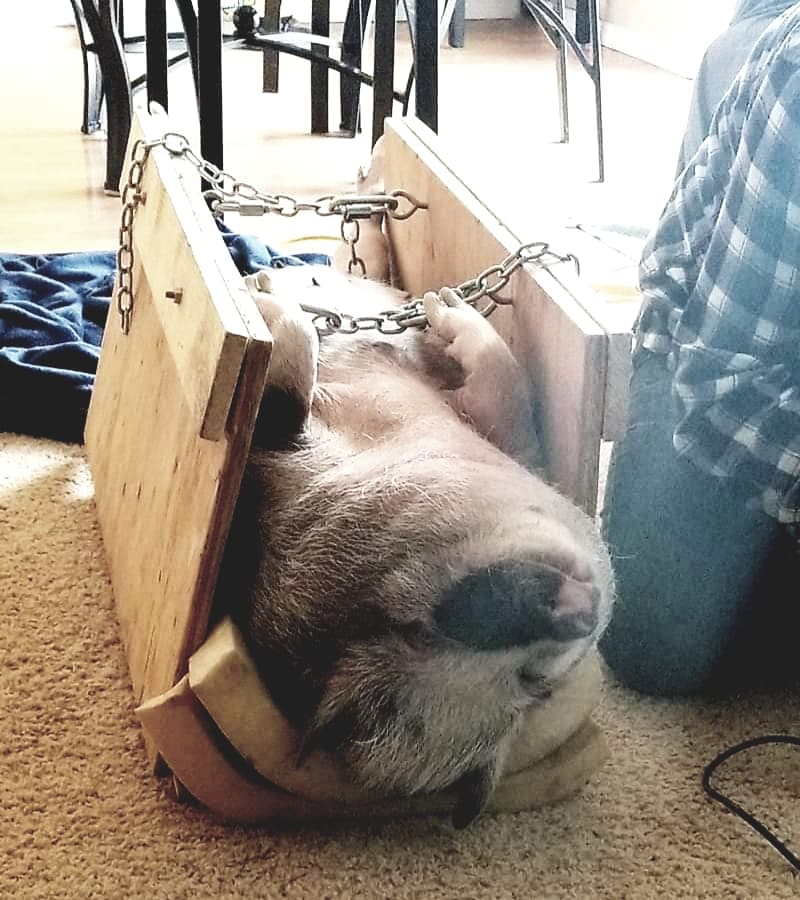
Hoofin’ It -
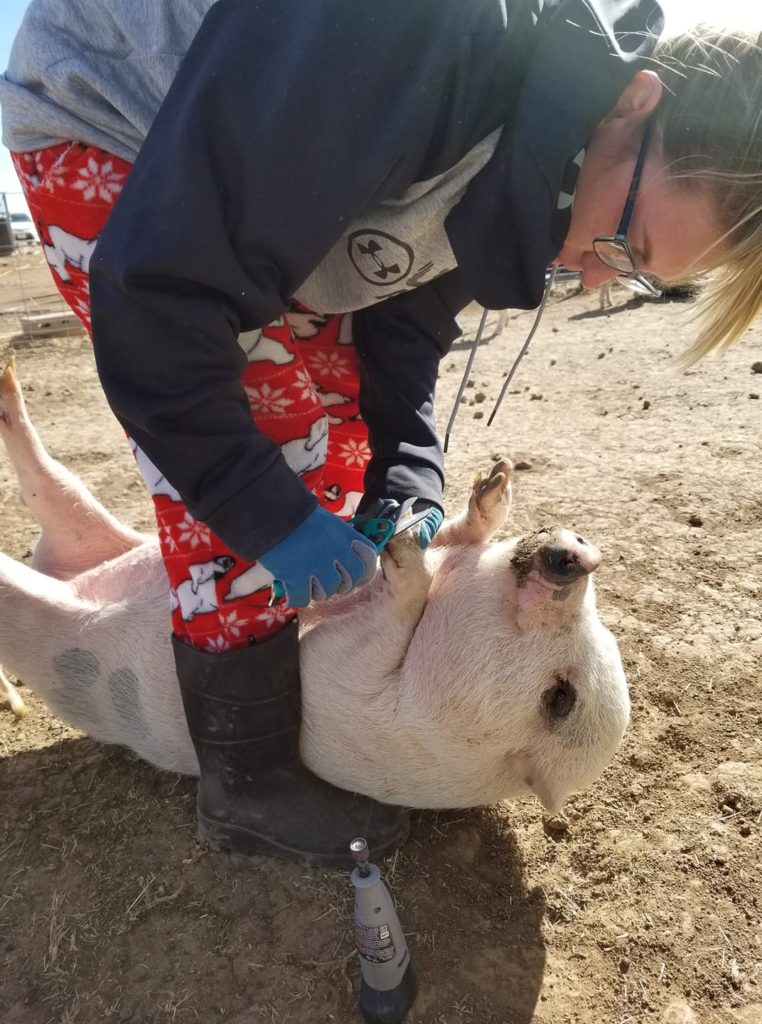
Hoof Trim Inspiration Photos & Videos
Some photos below courtesy of
Hoofin’ It – Mobile Small Livestock Hoof Care in Washington and
Freedom Acres Ranch in Michigan
-
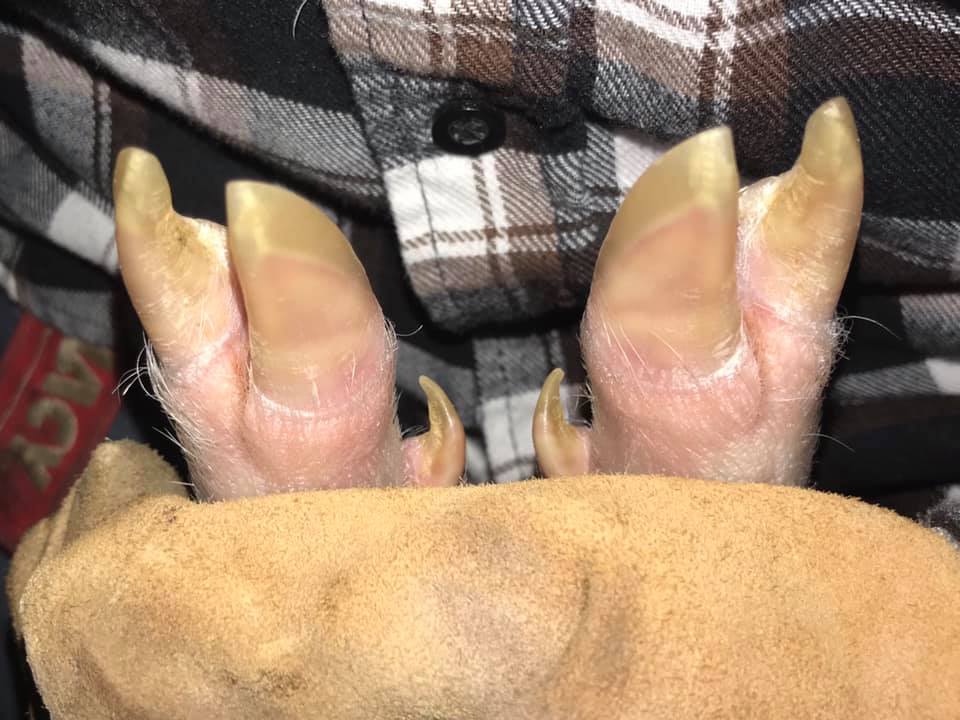
Time to Trim -

Hoof Conditioner -
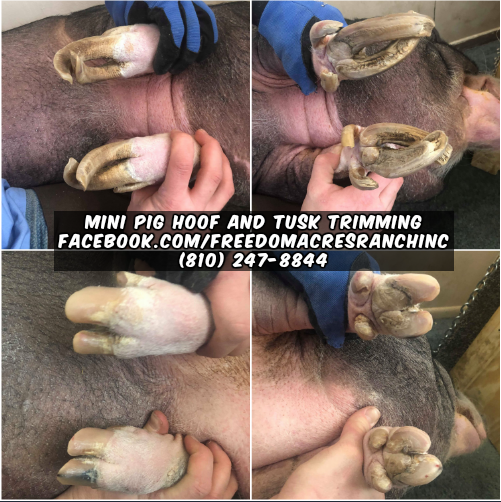
-

-
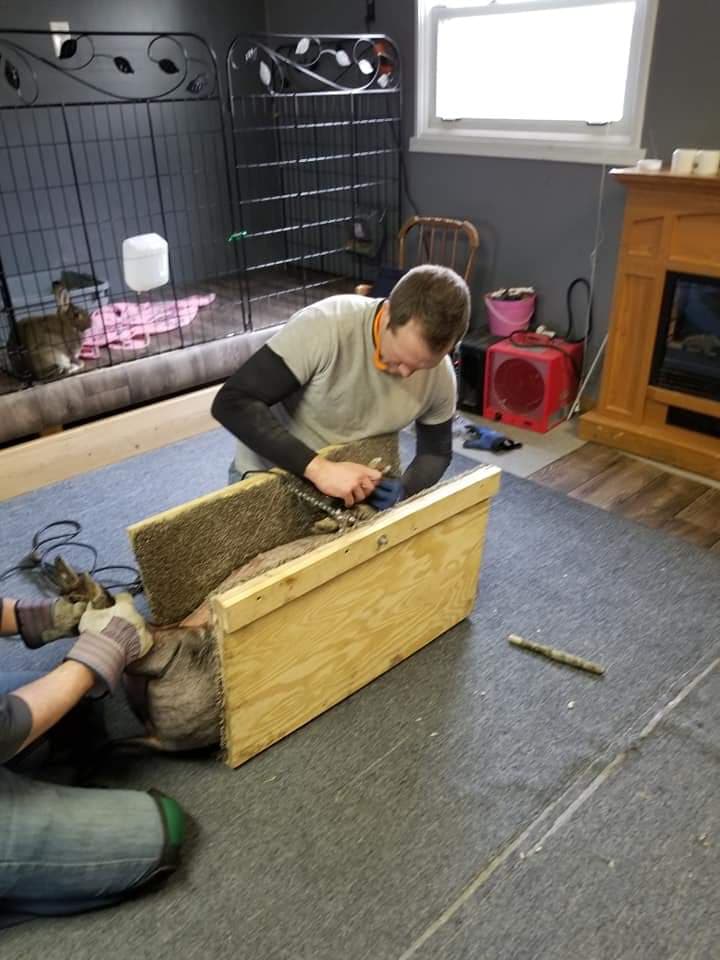
Pig Cradle holds pig securely -

-
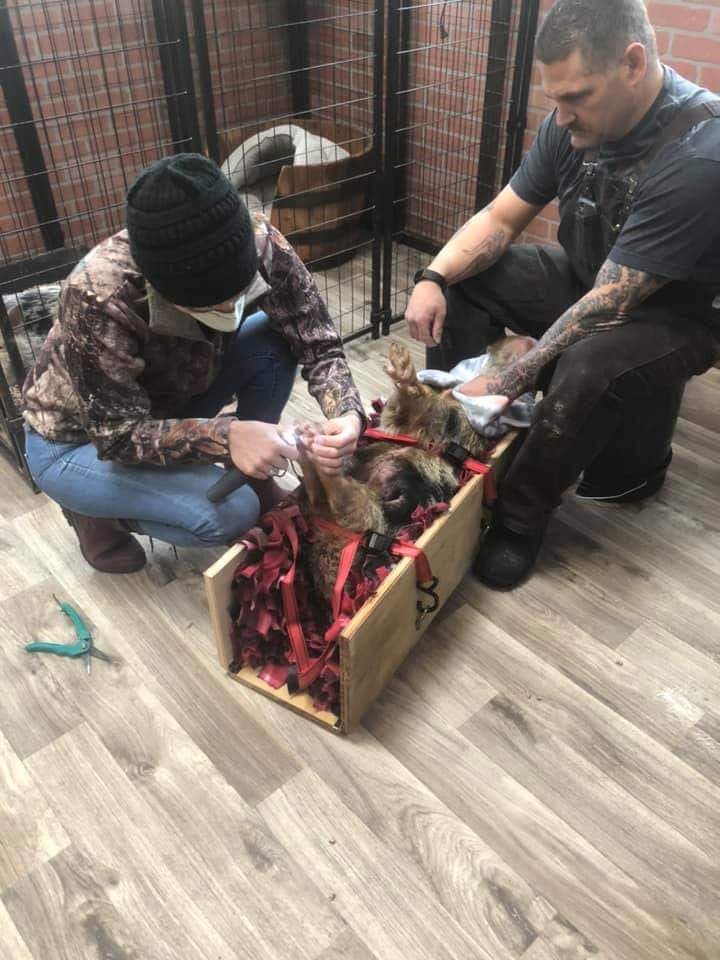
Sharp’s Mini Pigs -

Freedom Acres Ranch -
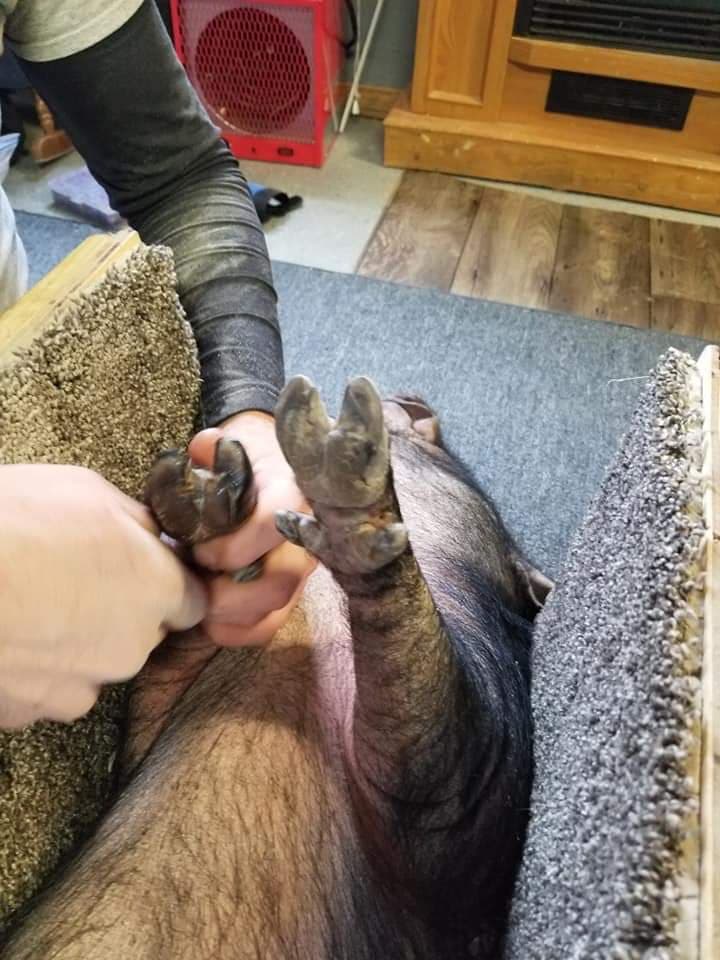
Freedom Acres Ranch -
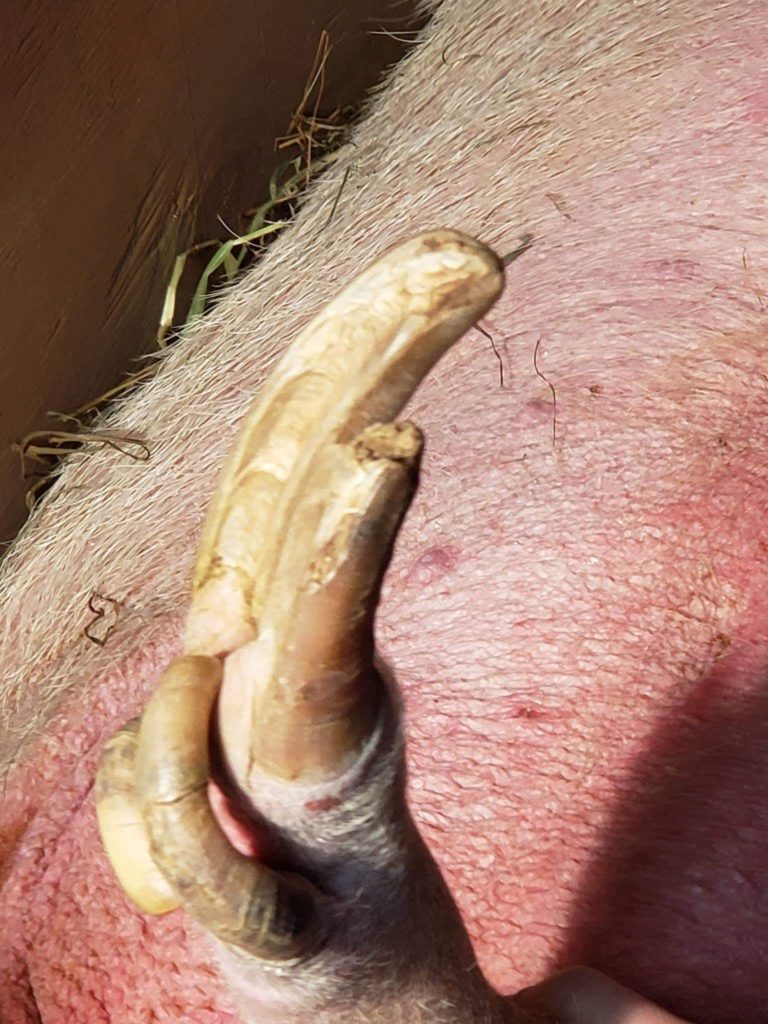
Freedom Acres trimmed these rescue hooves -

-
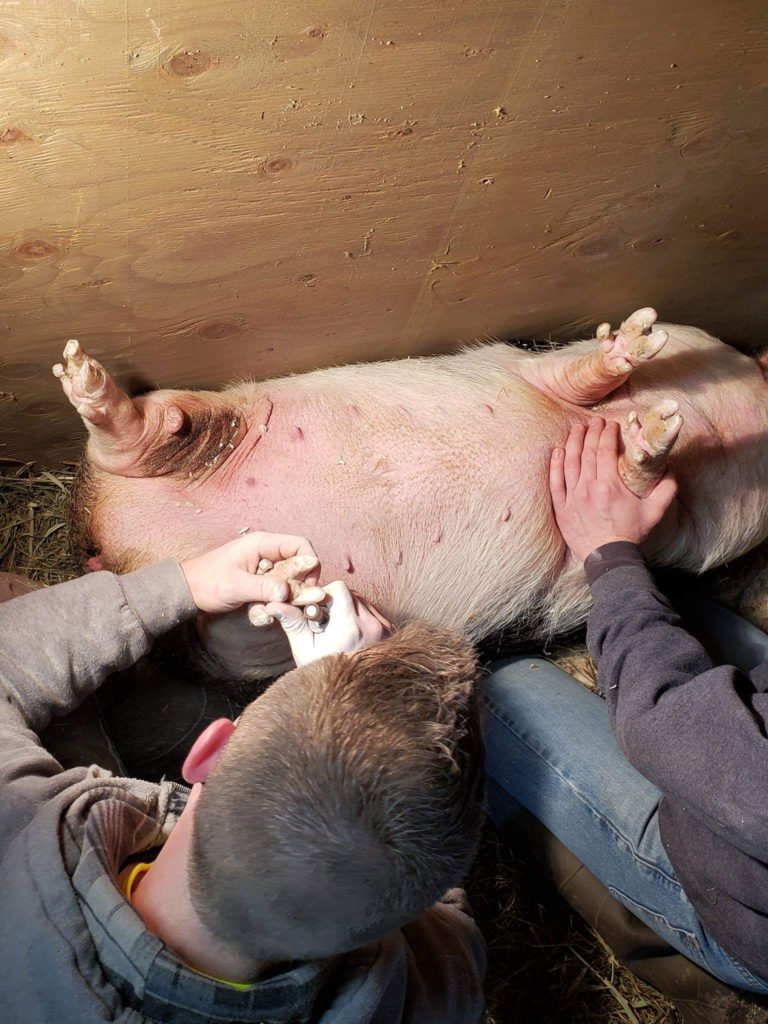
-
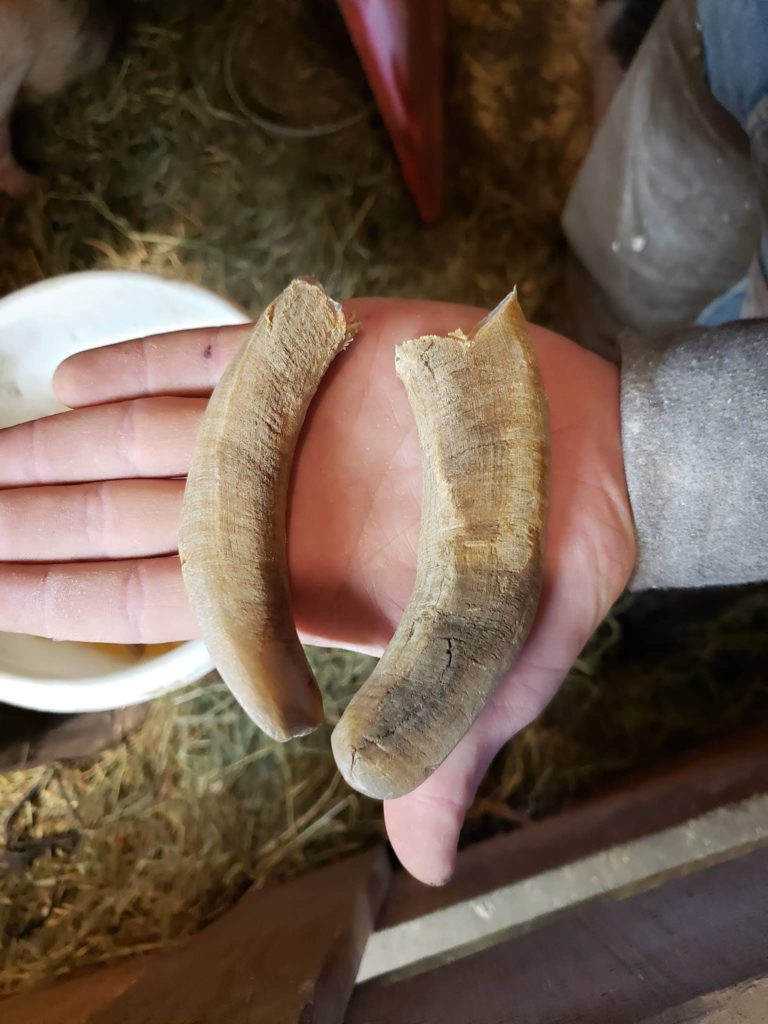
-

-
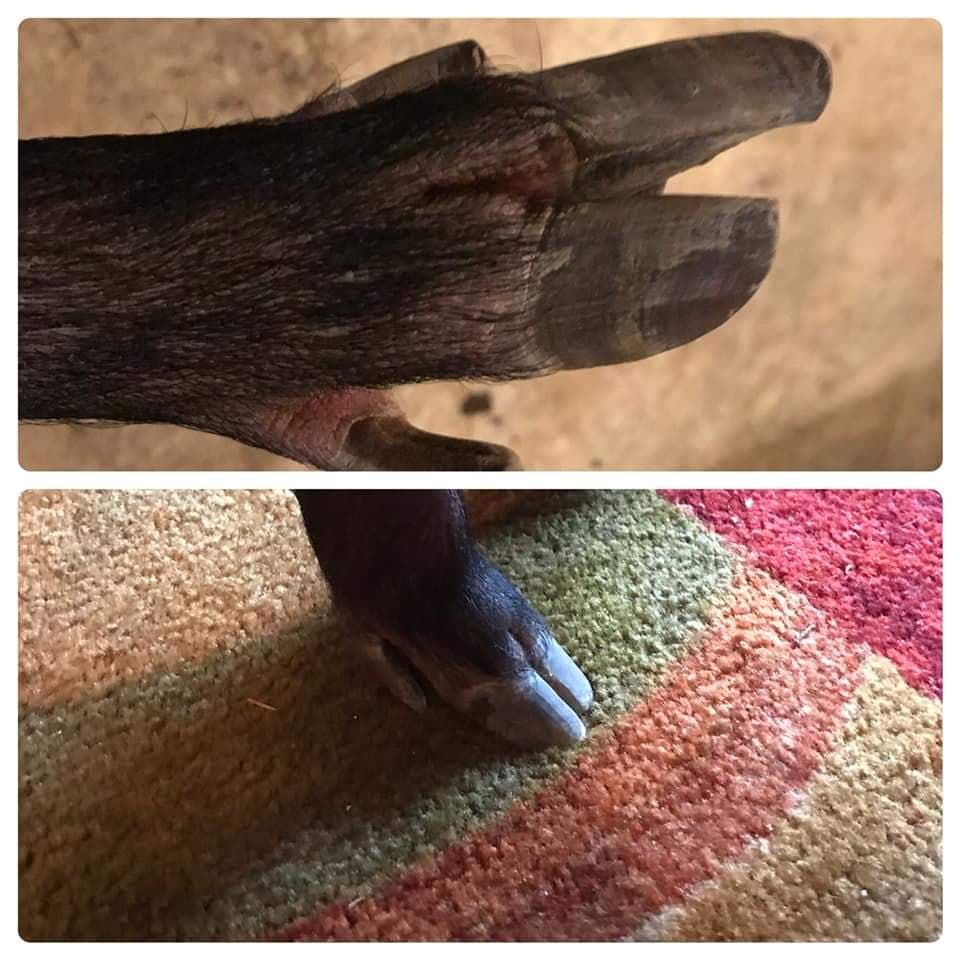
-

Properly trimmed hooves by Hoofin’ It Mobile Small Livestock Hoof Trimming
For more hoof care images visit our Pinterest board by clicking here.
Hoof Handling


